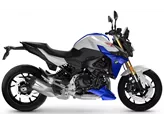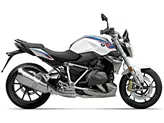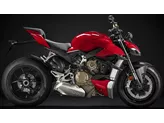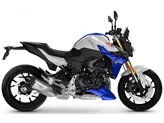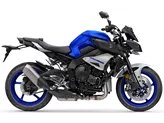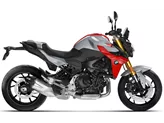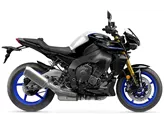BMW F 900 R 2020 vs. BMW S 1000 R 2016
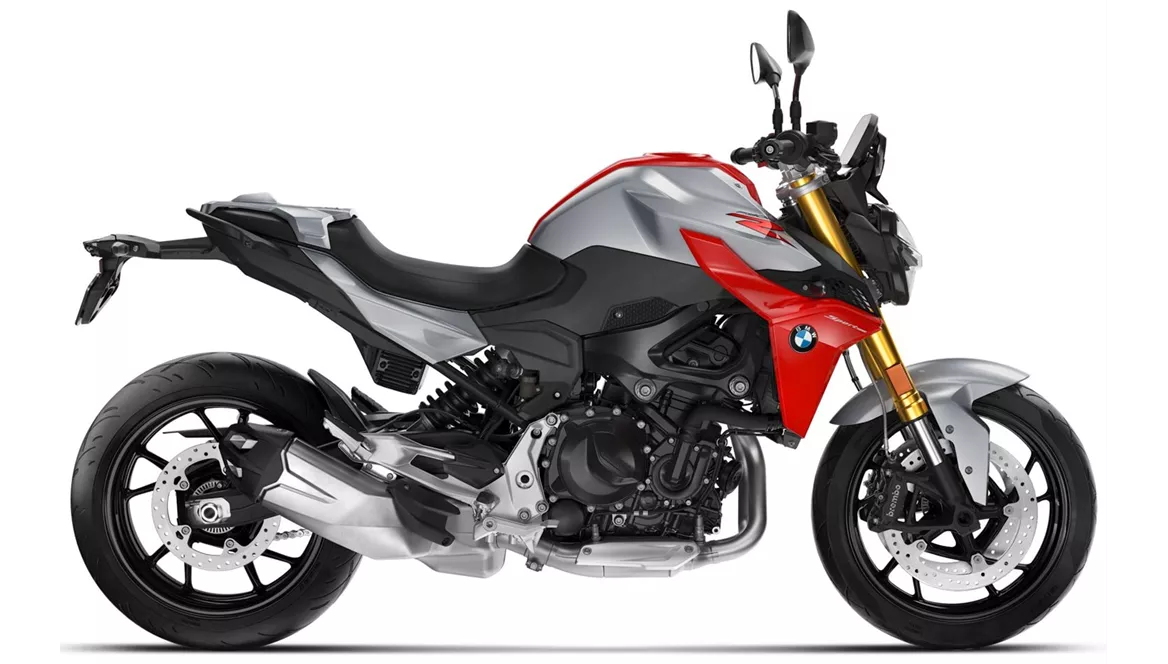
BMW F 900 R 2020

BMW S 1000 R 2016
Vue d’ensemble - BMW F 900 R 2020 vs BMW S 1000 R 2016
The BMW F 900 R 2020 and the BMW S 1000 R 2016 are both naked bikes from BMW, but they have some notable differences in their technical specifications and strengths.
Starting with the engine and drive train, the BMW F 900 R 2020 is equipped with a 2-cylinder in-line engine with a displacement of 895cc. It produces 105 horsepower and 92 Nm of torque. On the other hand, the BMW S 1000 R 2016 features a 4-cylinder in-line engine with a displacement of 999cc. It delivers a higher power output of 160 horsepower and 112 Nm of torque. This makes the S 1000 R more powerful and provides better acceleration compared to the F 900 R.
In terms of suspension, both bikes have upside-down telescopic forks at the front and a swing arm with a monoshock at the rear. This setup ensures good stability and handling for both models. However, the BMW S 1000 R 2016 has an advantage with its dynamic suspension, which enhances the overall riding experience and comfort.
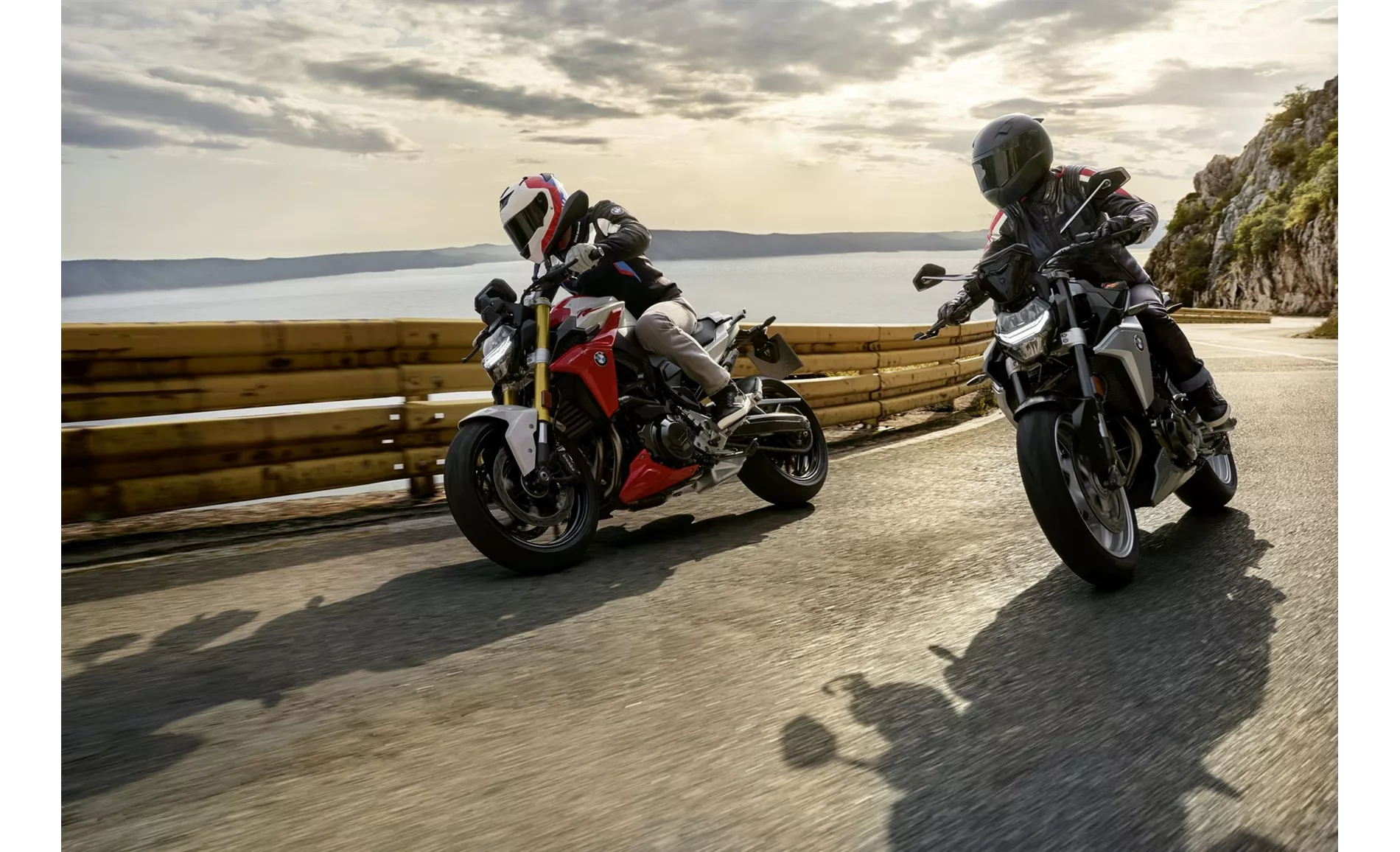
BMW F 900 R 2020
When it comes to the chassis, the BMW F 900 R 2020 has a steel frame with a twin-tube design that also acts as a load-bearing engine. On the other hand, the BMW S 1000 R 2016 features an aluminum frame with a twin-tube design. The aluminum frame provides a lighter weight and better handling compared to the steel frame of the F 900 R.
Both bikes have double disc brakes at the front with four pistons and radial technology, ensuring powerful and reliable braking performance. The BMW S 1000 R 2016 has a slight advantage with a larger rear tire width of 190mm compared to the 180mm on the F 900 R. This provides better traction and stability for the S 1000 R.
In terms of rider assistance systems, the BMW F 900 R 2020 comes equipped with ABS, anti-slipping control, and riding modes. The BMW S 1000 R 2016, on the other hand, features dynamic suspension as an advanced rider assistance system. This enhances the bike's suspension performance and adaptability to different riding conditions.
In terms of dimensions and weights, the BMW F 900 R 2020 has a wheelbase of 1518mm and a seat height of 815mm. It weighs 211kg (with ABS) and has a fuel tank capacity of 13 liters. On the other hand, the BMW S 1000 R 2016 has a slightly shorter wheelbase of 1439mm and a similar seat height of 814mm. It weighs slightly less at 207kg (with ABS) and has a larger fuel tank capacity of 17.5 liters.

BMW S 1000 R 2016
In terms of strengths, the BMW F 900 R 2020 is praised for its easy handling, high stability, well-behaved engine, and brakes without any faults. It also offers an active yet bearable seating position and has an extensive list of accessories available. On the other hand, the BMW S 1000 R 2016 is known for its powerful and controllable engine, powerful braking system, and comfortable seating position.
However, the BMW F 900 R 2020 does have some weaknesses, such as a smaller fuel tank capacity of 13 liters and a good but not exceptional engine. On the other hand, the BMW S 1000 R 2016 has some weaknesses, including the temptation of expensive optional extras and a harder chassis.
In conclusion, while both the BMW F 900 R 2020 and the BMW S 1000 R 2016 are impressive naked bikes from BMW, they have distinct differences in terms of power, chassis, and rider assistance systems. The F 900 R offers easy handling and stability, while the S 1000 R provides a more powerful engine and a more comfortable seating position. Ultimately, the choice between the two will depend on the rider's preferences and priorities.
Caractéristiques techniques BMW F 900 R 2020 par rapport à BMW S 1000 R 2016
Avantages et inconvénients en comparaison
Avantages et inconvénients en comparaison
BMW F 900 R 2020
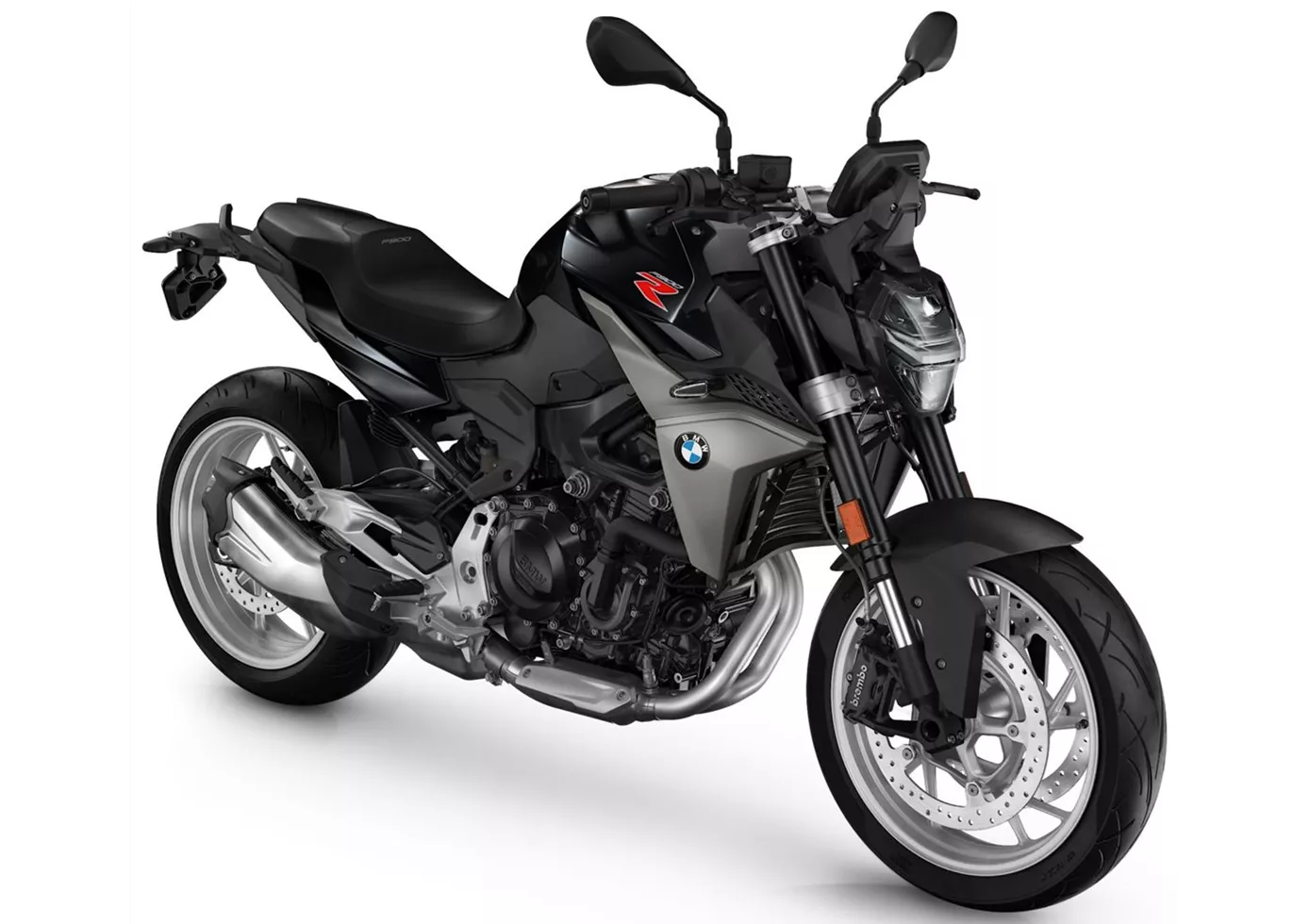
La BMW F 900 R offre un plaisir facile à prendre en virage, une énorme stabilité, une position de conduite active mais confortable et un moteur sans friction mais aussi sans émotion. Si vous aimez la vitesse et les virages, vous serez heureux avec elle. Les possibilités de configuration sont infinies mais ne sont pas gratuites.
BMW S 1000 R 2016

Sur la BMW S 1000 R, on remarque à la fois la parenté étroite avec la Superbike S 1000 RR et la volonté de doter la machine d'un niveau de confort élevé pour la route et le quotidien. Le moteur quatre cylindres de 1000 cm3 se met donc au travail de manière brutale, tout en restant bien contrôlable, et la position de conduite est par conséquent confortable et sportive. Le fait que la S 1000 R soit l'une des power naked bikes les plus abordables est surprenant et réjouissant, mais il ne faut pas pour autant mettre la main sur la liste des équipements spéciaux - car grâce aux nombreuses caractéristiques irrésistibles, elle sera certainement plus chère.
Comparaison des prix Prix moyen du marché BMW F 900 R vs BMW S 1000 R
There are a few key differences between a BMW F 900 R 2020 and a BMW S 1000 R 2016. In terms of price, the actual average price of a BMW S 1000 R 2016 is about 19% higher. A BMW F 900 R 2020 experiences a loss of 700 USD in one year and 700 USD in two years of ownership. This is offset by a loss of 380 USD and 1,940 USD for a BMW S 1000 R 2016. Compared to BMW S 1000 R 2016 there are more BMW F 900 R 2020 bikes available on the 1000PS.de Marketplace, specifically 14 compared to 10. It takes less time to sell a BMW S 1000 R with 69 days compared to 82 days for the BMW F 900 R. Since model year 2020 1000PS.de editors have written 24 reviews for the BMW F 900 R and 62 reviews for the BMW S 1000 R since model year 2014. The first review for the BMW F 900 R was published on 11/5/2019 and now has more than 154,700 views. This compares to more than 17,300 views for the first review on BMW S 1000 R published on 11/3/2013.



